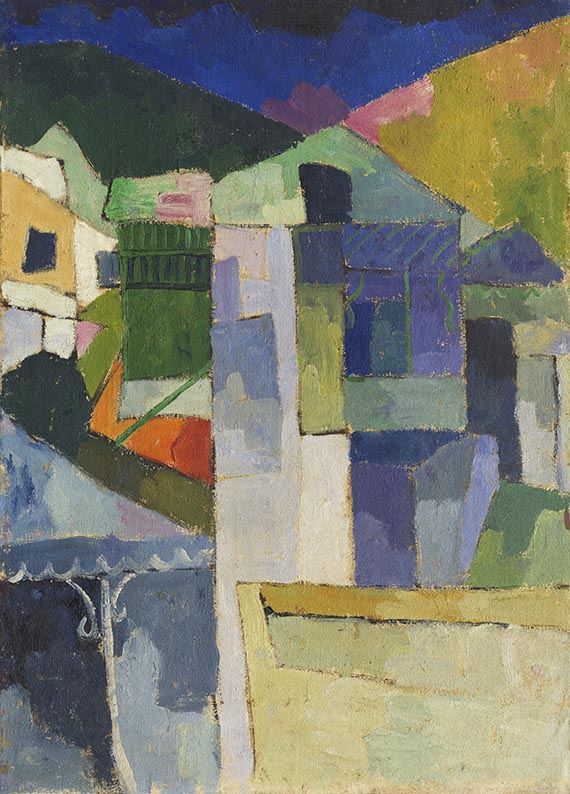Dictionary


Zopfstil
Like Louis Seize and Josephinism, the term "Zopfstil" (Late Rococo Style) was synonymous with rococo classicism (Paul Ferdinand Schmidt) and late baroque classicism (Sigfried Giedion). The style was the result of the permeation of classical principles into rococo during its last phase, between c. 1760 and 1780/90. "Zopf" (plait) was a colloquial term used for everything old-fashioned and retrogressive. It was non-specifically used as a pejorative term for the style that came into being between the mannerist and rococo periods, and later referred specifically to the 17th and 18th centuries. A. von Zahn described the Zopfstil as a tendentious, early classical style, distinct from rococo and late baroque. The Zopfstil was regarded as being part of the "aristocratic epochs", although it also had bourgeois associations.
Zopfstil architecture was characterised by gradual simplification and clear division. Zopfstil painting was serious and sensitive, and strived for truth in representation and historical accuracy. The dynamic and painterly palate of late baroque art was replaced by calmer pictorial tectonics and an increasing linear clarity. Figures were reduced. Christoph Fesel and Daniel Nikolaus Chodowiecki (1726-1801) were among the key exponents of the Zopfstil in painting and graphics.
Portrait painting became less representative and more intimate (Johann Heinrich Wilhelm Tischbein, 1751-1829). Although he was active during the Zopfstil period, Anton Raphael Mengs was not part of the movement - he was regarded as the founding father of classicism. Sculpture was more noticeably influenced by the late baroque style than painting – the Zopfstil was expressed in solid posture motifs and the reduction of dramatic gestures. David Roentgen (1743-1807) was the leading furniture designer of the era, and was influenced by English and French styles.
Like Louis Seize and Josephinism, the term "Zopfstil" (Late Rococo Style) was synonymous with rococo classicism (Paul Ferdinand Schmidt) and late baroque classicism (Sigfried Giedion). The style was the result of the permeation of classical principles into rococo during its last phase, between c. 1760 and 1780/90. "Zopf" (plait) was a colloquial term used for everything old-fashioned and retrogressive. It was non-specifically used as a pejorative term for the style that came into being between the mannerist and rococo periods, and later referred specifically to the 17th and 18th centuries. A. von Zahn described the Zopfstil as a tendentious, early classical style, distinct from rococo and late baroque. The Zopfstil was regarded as being part of the "aristocratic epochs", although it also had bourgeois associations.
Zopfstil architecture was characterised by gradual simplification and clear division. Zopfstil painting was serious and sensitive, and strived for truth in representation and historical accuracy. The dynamic and painterly palate of late baroque art was replaced by calmer pictorial tectonics and an increasing linear clarity. Figures were reduced. Christoph Fesel and Daniel Nikolaus Chodowiecki (1726-1801) were among the key exponents of the Zopfstil in painting and graphics.
Portrait painting became less representative and more intimate (Johann Heinrich Wilhelm Tischbein, 1751-1829). Although he was active during the Zopfstil period, Anton Raphael Mengs was not part of the movement - he was regarded as the founding father of classicism. Sculpture was more noticeably influenced by the late baroque style than painting – the Zopfstil was expressed in solid posture motifs and the reduction of dramatic gestures. David Roentgen (1743-1807) was the leading furniture designer of the era, and was influenced by English and French styles.
Offers
Headquarters
Joseph-Wild-Str. 18
81829 Munich
Phone: +49 89 55 244-0
Fax: +49 89 55 244-177
info@kettererkunst.de
Louisa von Saucken / Undine Schleifer
Holstenwall 5
20355 Hamburg
Phone: +49 40 37 49 61-0
Fax: +49 40 37 49 61-66
infohamburg@kettererkunst.de
Dr. Simone Wiechers / Nane Schlage
Fasanenstr. 70
10719 Berlin
Phone: +49 30 88 67 53-63
Fax: +49 30 88 67 56-43
infoberlin@kettererkunst.de
Cordula Lichtenberg
Gertrudenstraße 24-28
50667 Cologne
Phone: +49 221 510 908-15
infokoeln@kettererkunst.de
Hessen
Rhineland-Palatinate
Miriam Heß
Phone: +49 62 21 58 80-038
Fax: +49 62 21 58 80-595
infoheidelberg@kettererkunst.de
We will inform you in time.




